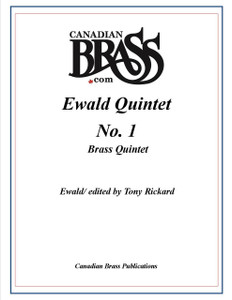

For most early brass chamber music, the quartet (two trumpets, horn, trombone or two trumpets and two trombones) was the vehicle of choice when it was supplanted in the 1930s, it was not by the quintet but rather by the sextet of two trumpets, horn, trombone, baritone (euphonium), and tuba. But Ewald's quintets did not herald a movement toward brass quintet writing. Smith ), encouraged Victor Ewald (1860-1935) to write four brass quintets (the first composed around 1890) that form the early staples of the brass quintet repertoire.

As early as the late nineteenth century, cornet player, conductor, composer, instrument designer, and pedagogue Jean-Baptiste Arban (1825-1889), best known today for his universally used treatise Méthode complète de cornet à pistons et de saxhorn (Paris, 1864 various editions and translations, including, in English, Arban's Complete Conservatory Method, ed. The effort that finally established the brass quintet as a mainstream ensemble, however, was just one of a series of attempts to raise the profile of brass chamber music. The modern brass quintet (two trumpets, horn, trombone, and tuba/bass trombone) rose to prominence only in the mid-twentieth century, largely driven by the infectious energy and effort of a few influential brass players.


 0 kommentar(er)
0 kommentar(er)
